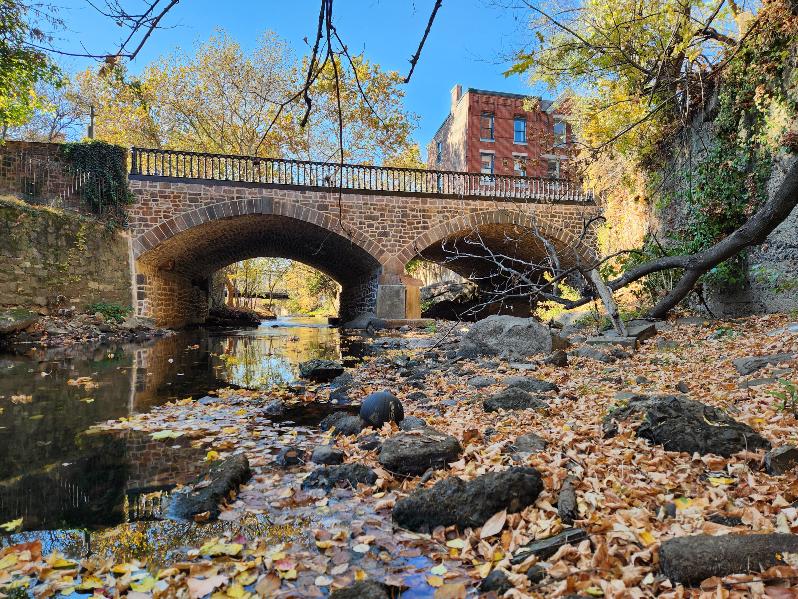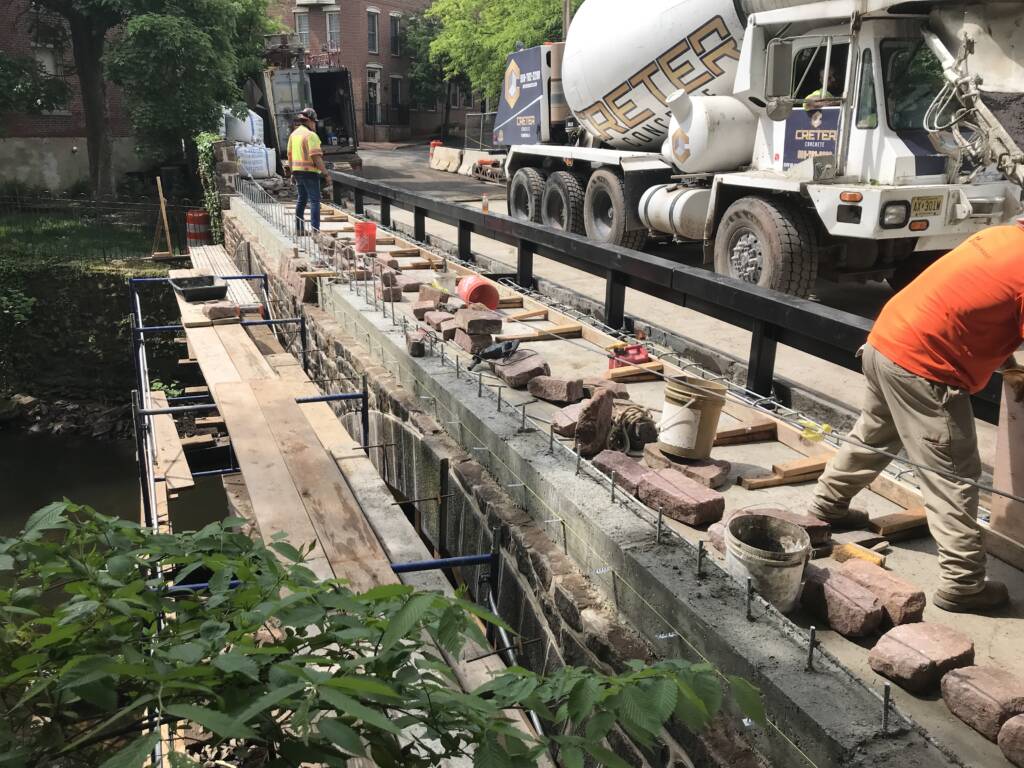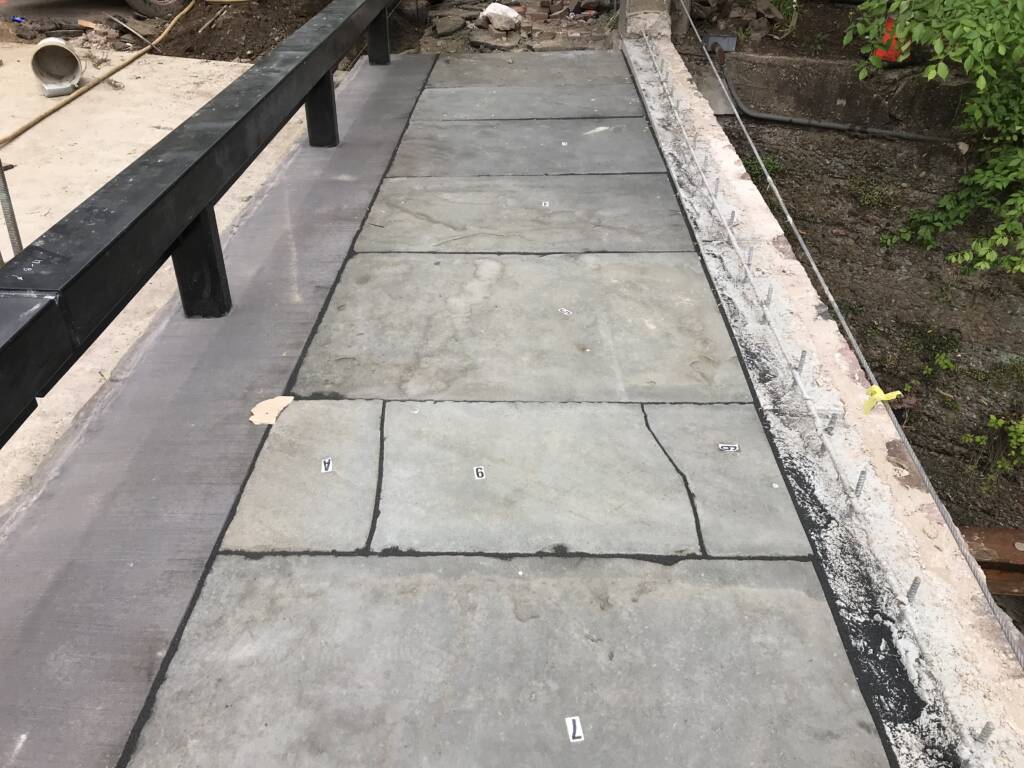TPD provided professional engineering design services for the rehabilitation of Montgomery Street Bridge 140.4 (NJDOT Structure #1100051) carrying Montgomery Street over Assunpink Creek in the City of Trenton, Mercer County, NJ.



The existing structure is a 151-year-old, two barrel, 58’ long masonry arch bridge which is on both the New Jersey State Historic Register and the National Historic Register, and is located in the National Register listed historic Mill Hill District. The bridge exhibited medium to wide cracks and missing stones in the arch barrels, defects in the spandrel walls, an abandoned water main penetrating the arches, scour and historic but substandard cast iron bridge railing. The proposed design included relocating utilities attached to the spandrel walls into the sidewalk, removing the abandoned water main and sealing the penetrations, constructing a floating concrete deck distribution slab, replacing missing intrados stones with black pigmented concrete, crack sealing, repointing and sealing, as well as the removal and rehabilitation of the cast-iron bridge railing and the installation of Washington DC Historic Bridge Rail at the curbline to protect the original rail. The project also included scour remediation.
The accommodation of the historic elements of this structure presented the greatest design challenges. The cast iron bridge railing is a character-defining element of the bridge. The installation of the Washington DC Historic Bridge Rail allowed the rail to be refurbished and reinstalled on the structure. The existing slate sidewalk was also removed, stored and then reinstalled on the new bridge, as well as the slate curb. In both cases the existing components were numbered to an aerial mapped key sheet and then reset to their existing locations after construction. After TPD’s extensive coordination with local stakeholders, NJDOT, the NJ State Historic Preservation Office and organizations such as Washington DC DOT, FHWA Washington DC office, Puerto Rico FHWA office, Puerto Rico DOT and finally the Bridge Inspection section of the Puerto Rico DOT, the project received administrative approval from the NJ State Historic Preservation Office with a finding of no encroachment and in compliance with the Secretary of the Interior Standards.
The plans were developed for flexibility to accommodate unforeseen conditions as no records existed for the bridge. Details to address specific defects could be omitted or modified as necessary without affecting other elements of the work. Traditional arch rehabilitations typically call for the construction of concrete arch rings, behind the stone rings, which are then supported on concrete footings independent of the original arch. The load distribution slab approach minimized excavation and addressed the indeterminate backfill by disturbance avoidance. The flexibility of the plans paid dividends throughout construction as numerous unforeseen conditions did arise.
All work was completed using staged construction. This project was completed significantly under budget and before the anticipated delivery date.
The rehabilitation of the historic Montgomery Street Bridge, which carries Montgomery Street over the Assunpink Creek in the historic Mill Hill District of Trenton, is a prime example of what can be accomplished to preserve a critical historical component of a community by engaging the stakeholders in the development of the design and addressing their concerns to obtain their approval. The agile yet attentive and dedicated team approach to this complex project, as well as the resulting preservation of a key historic structure, is truly worthy of recognition.


